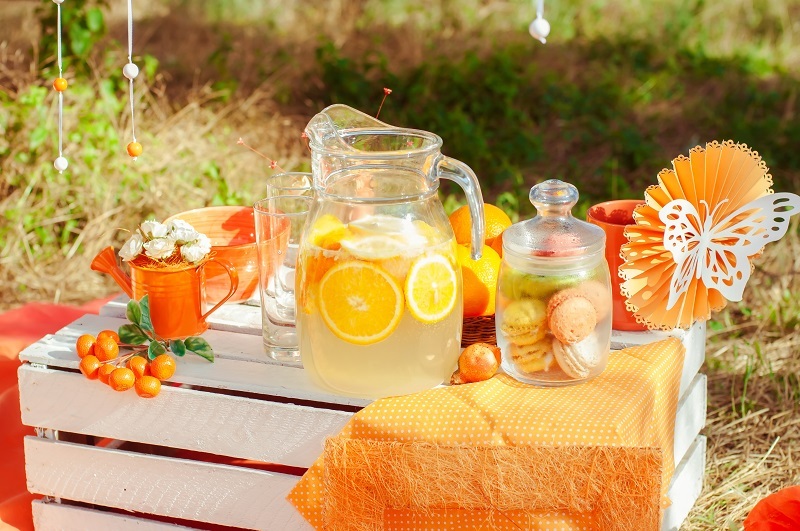Cut Flower Care: Simple Yet Effective Tips
Posted on 13/08/2025
Cut Flower Care: Simple Yet Effective Tips
Fresh cut flowers have a remarkable ability to brighten up any space, infusing homes, offices, and event venues with beauty, color, and vitality. However, keeping your cut flower arrangements looking vibrant for days (or even weeks) requires the right knowledge and attention. In this comprehensive guide, we'll explore easy but effective flower care tips that extend the life of your bouquet, help you avoid common mistakes, and keep your space flourishing with natural splendor.
Why Cut Flower Care Matters
Most people love receiving or decorating with cut flowers, but are often disappointed when those lovely blooms wilt within days. The short lifespan of flowers is due to exposure to bacteria, low water uptake, unsuitable temperatures, and more. Proper care can elongate the life of your floral arrangement, letting you enjoy their beauty much longer and saving you money on frequent replacements.
- Extend vase life from a few days to over a week
- Prevent premature wilting and browning
- Reduce waste by maximizing every bouquet
- Enjoy consistently fresh and healthy-looking blooms

Understanding the Basics of Cut Flower Care
Before delving into the advanced tips, it's critical to grasp the fundamental rules of fresh cut flower care. These principles apply to almost all varieties--roses, tulips, lilies, or even wildflowers.
1. Start With a Clean Vase
A clean vase is vital. Even if you just purchased a new vase, always rinse it thoroughly with soap and hot water. This eliminates bacteria and residue that could quickly contaminate your flowers' water.
2. Use Fresh, Cool Water
Always fill your vase with cool, clean water. Hot water can shock the stems, while tepid or dirty water provides a thriving environment for bacteria. For most varieties, cool water is best; however, certain flowers like roses may benefit from slightly warmer water initially to encourage full blooms.
3. Trim Stems Properly
Use sharp, clean scissors or a floral knife to snip the bottom 1-2 inches of the stems at a 45-degree angle. This increases the surface area for water absorption and prevents the stems from sitting flat on the bottom of the vase, which can block water uptake.
4. Remove Lower Leaves
Strip any leaves that will be below the waterline. Leaves submerged in water rot quickly, causing bacterial build-up that clogs stems and shortens your flowers' lifespan.
5. Change Water Regularly
Every 2-3 days, remove the flowers, rinse the vase, and fill it with fresh water. Some flowers, like tulips or hydrangeas, are especially sensitive to bacteria, so the cleaner the environment, the better!
Advanced Cut Flower Care Techniques to Prolong Bloom Life
Simple care makes a noticeable difference, but going the extra mile with these advanced tricks can truly extend the lifespan of your floral arrangements.
1. Feed Your Flowers: Use Flower Food or DIY Alternatives
- Commercial flower food contains a blend of sugars (for nourishment), acidifiers (for pH balance), and biocides (to kill bacteria and fungi).
- If you're out of flower preservative, make your own by mixing a teaspoon of sugar, a few drops of bleach, and a teaspoon of lemon or lime juice per quart of water. The sugar provides energy, while bleach and acids help prevent contamination.
2. Re-Cut Stems Every Few Days
With time, flower stems can seal over or clog. Every two or three days, re-trim a half inch from the ends. This fresh cut allows better water uptake and keeps your bouquet looking fresh and lively.
3. Monitor Location and Temperature
- Keep vases away from direct sunlight. Excessive heat dehydrates flowers and accelerates wilting.
- Avoid placing bouquets near heating/cooling vents, radiators, or electronics.
- Don't put fresh flowers next to ripening fruits or vegetables; fruits release ethylene gas, which speeds up flower decay.
4. Remove Fading Flowers Promptly
As individual flowers in the arrangement age and wilt, promptly remove them. Decaying flowers release ethylene and encourage bacteria, which can rapidly shorten the lifespan of the remaining blooms.
5. Mist Petals for Hydration
Some flowers--including orchids, hydrangeas, and roses--benefit from an occasional gentle misting to hydrate petals externally, especially in dry environments.
6. Use the Right Vase for the Right Flower
Choose vases that provide ample support for the stems. Tall, heavy-headed flowers like lilies and sunflowers need sturdy, upright vases. Dense arrangements benefit from wider-mouthed vessels, while delicate or individual stems shine in bud vases.
Special Care for Popular Cut Flowers
Different flower types have unique preferences and traits. Here's how to care for some of the most common varieties for the longest vase life possible.
Tulips
- Use cold water and leave tulips in the wrapper for a few hours upon arrival to encourage upright stems.
- Trim tulips often; their stems elongate in the vase!
- Keep away from fruit bowls and warm spots.
Roses
- Remove any thorns that could fall into the water.
- Place in slightly warm water at first, then change to cool water after a few hours.
- Re-cut stems every two days and replenish flower food for optimal longevity.
Hydrangeas
- Dip the freshly cut stem ends into boiling water for 30 seconds to prevent air bubbles (which can hinder water uptake).
- Mist petals daily to prevent wilting.
- Submerge entire flower heads in cool water for a 30-minute 'bath' if they start to wilt.
Lilies
- Remove pollen-bearing anthers to prevent stains and prolong flower life.
- Support heavy blooms with a tall vase.
- Trim stems and refresh water every two days to minimize bacteria build-up.
Orchids
- Use distilled or filtered water if possible; orchids are sensitive to minerals.
- Mist petals lightly and keep away from direct light.
- Use narrow vases to support slender stalks.
Common Cut Flower Care Mistakes to Avoid
- Using dull scissors or crushing stems - always use sharp floral shears to prevent damaging the vascular tissue.
- Allowing leaves to sit in water - this rapidly increases bacterial growth.
- Neglecting to refresh water - old water harbors bacteria and blocks absorption.
- Ignoring water temperature - different blooms prefer different temperatures.
- Positioning flowers near fruit or open windows - ethylene gas, drafts, and sunlight hasten decay.
DIY Flower Care Solutions
You don't need commercially produced preservatives to keep your cut flowers fresh. Here are some household alternatives that really work:
- Lemon-lime soda (clear, not diet): The sugar nourishes flowers. Mix 1 part soda with 3 parts water.
- White vinegar and sugar: A tablespoon each per quart of water acidifies and feeds.
- Aspirin: Crush one tablet and dissolve it in the water. It lowers pH, making it harder for bacteria to thrive.
- Bleach: A quarter teaspoon per quart helps control microorganisms (don't overdo it, or you could damage stems).
How to Revive Wilting Flowers
Even the best-cared-for blooms sometimes wilt unexpectedly. It's often possible to revive cut flowers using these steps:
- Trim the stems by an inch or more at a 45-degree angle.
- Plunge stems into lukewarm water for an hour--some tough flowers benefit from hot water 'shocking' (consult care guides before trying).
- Rearrange flowers in a freshly cleaned vase with new water and flower food.
- Mist the petals lightly and place out of direct sunlight.

Bonus Tips for Sustainable Flower Enjoyment
- Compost spent blooms when they finally fade, returning them to the earth.
- Choose local or seasonal flowers for your arrangements--these last longer and have a lower environmental impact.
- Reuse vases and experiment with creative vessels--teacups, jars, bowls--to add personal flair!
- Dry and preserve select blooms as keepsakes or for future decor projects.
Conclusion: Make Every Bouquet Last
Whether you're handling a lavish bouquet of roses, a simple hand-picked posy, or fresh cut flowers from your garden, proper care transforms fleeting beauty into enduring delight. By following these simple yet effective tips for cut flower care, using the right flower food, and staying vigilant for signs of decay, you'll maximize the enjoyment and value of every stem you bring indoors.
Remember: Cleanliness, proper water, diligent trimming, and smart placement are the keys to vibrant, long-lasting arrangements. Enjoy the bountiful beauty of flowers for much longer--with just a little extra care.
Related Articles:
- Best Flowers for Long Vase Life
- How to Make Your Own Eco-Friendly Floral Arrangements
- Gardening Tips for New Florists
Latest Posts
Get to Know Your Birth Flower and the Secrets It Holds About You
Uncover 8 Sunflower Facts That Defy the Norm
Vibrant Blooms for a Vibrant Birthday Celebration





